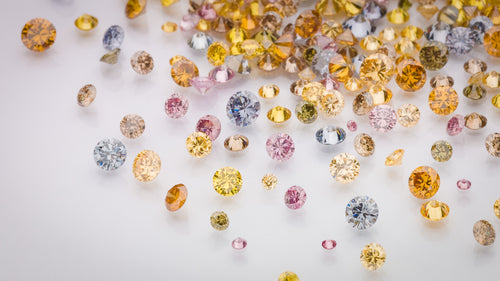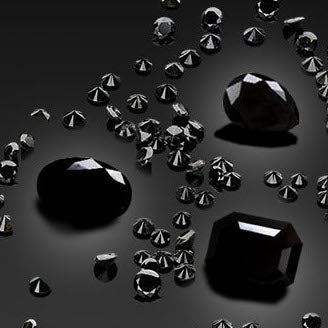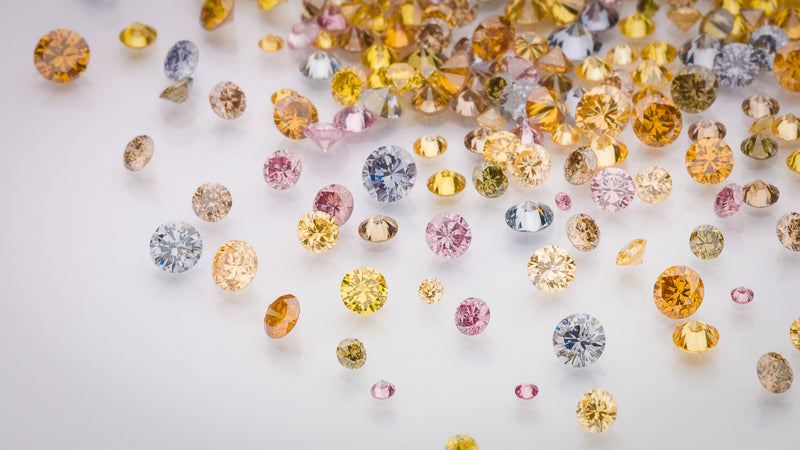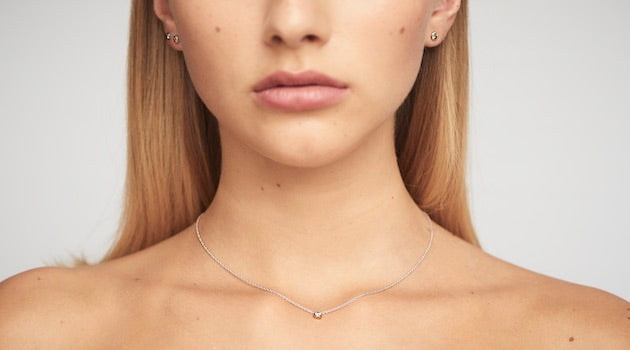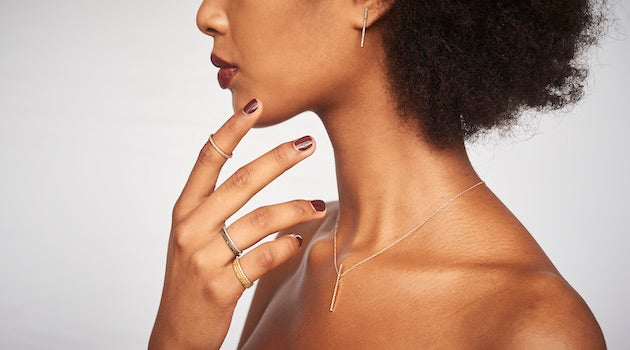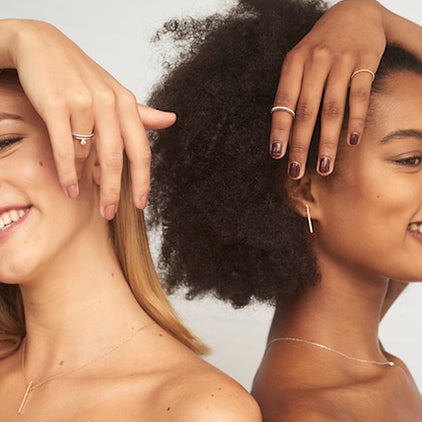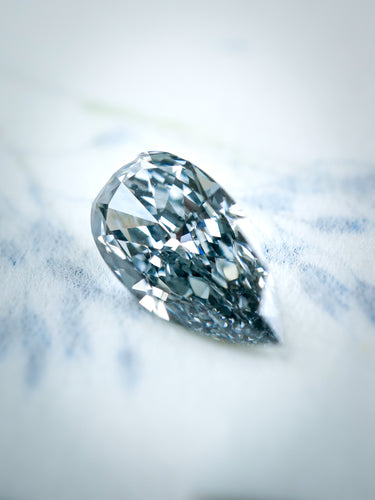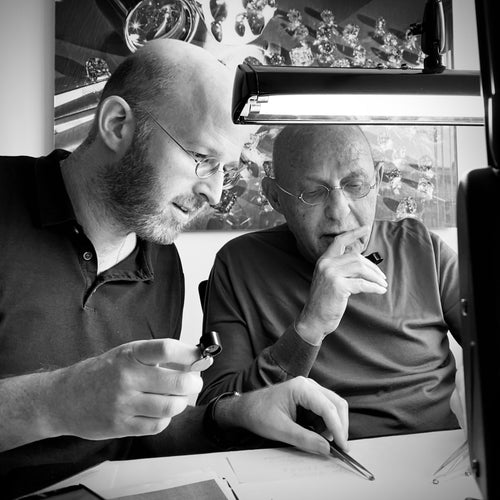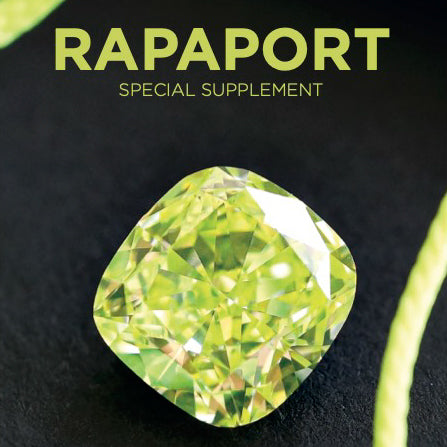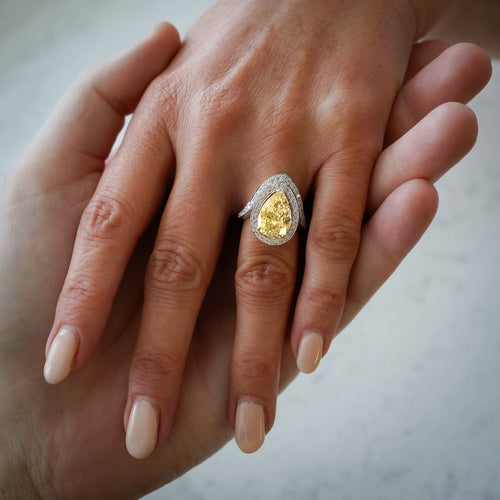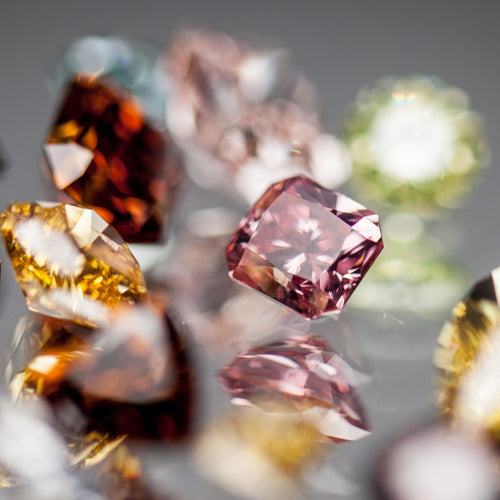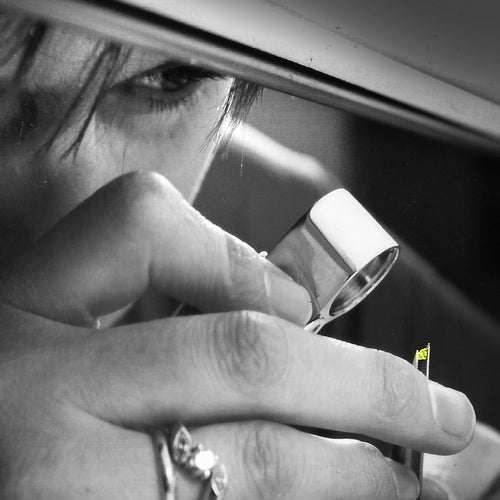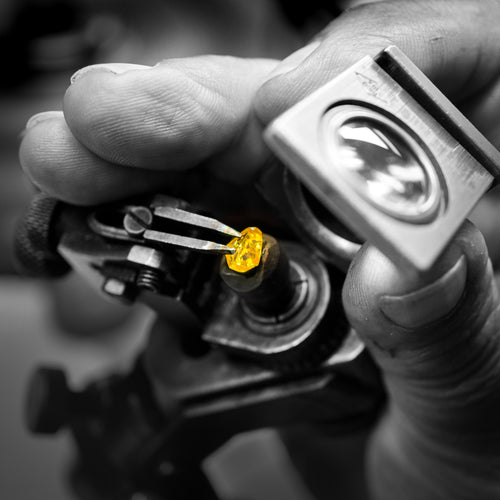Method Used and Mani Laboratories
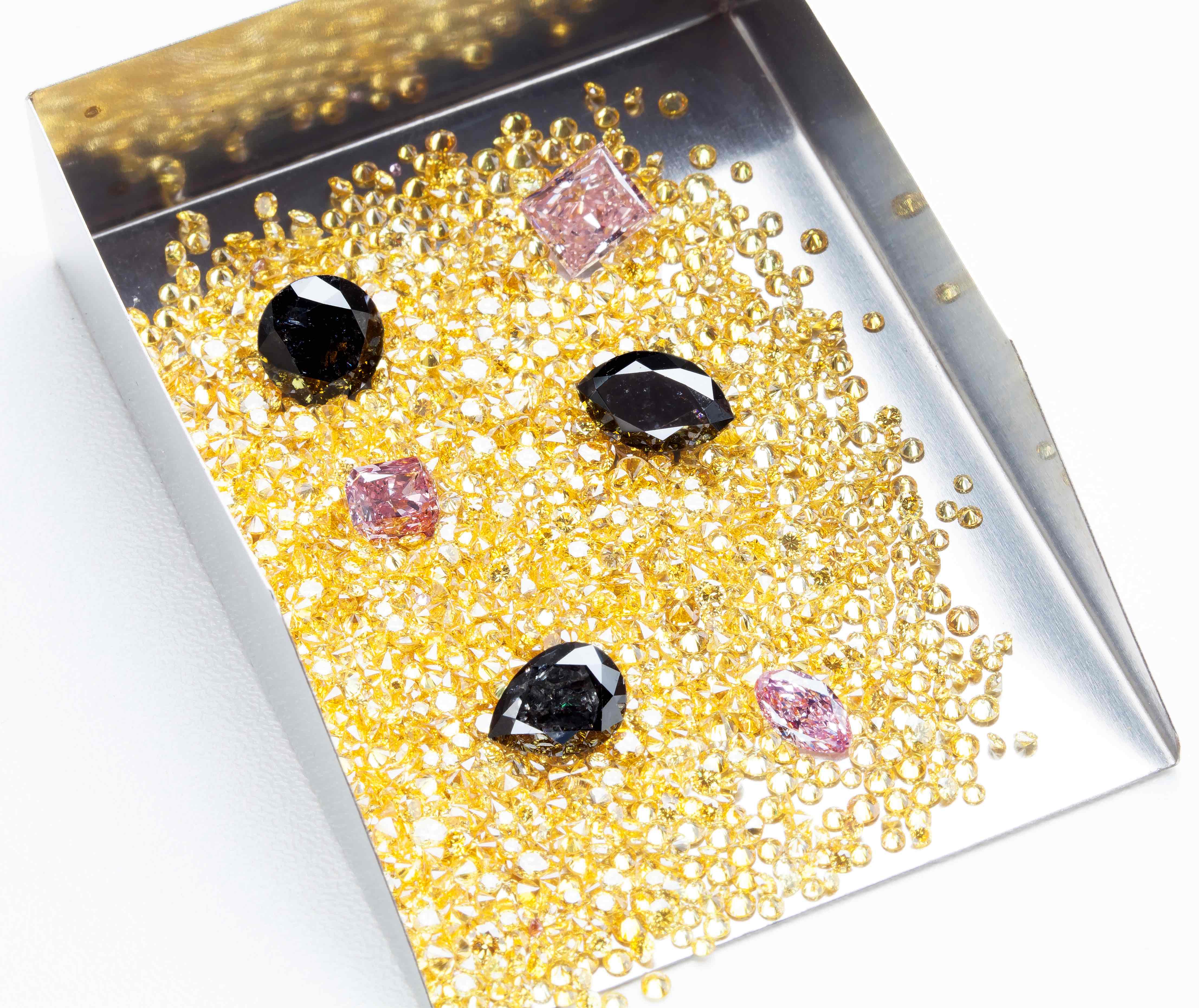
The natural colored diamond grading system is based on the 4 Cs, just like the colorless diamond grading system. Grading a natural color diamond’s hue is another story though. It is much more complicated since color diamonds come in an infinite number of colors and nuances. Additionally, contrary to the colorless grading system, which has been established long ago, the grading of colored diamonds is still a very recent science and it is constantly progressing. This is why to this day, there is no international harmonization concerning the methods used to grade natural color diamonds.
The three main laboratories that grade color diamonds are: GIA, IGI, HRD.
The GIA has created a very complex grading system that differs for each shade. This can be explained by the fact that each color and all of its shades is considered differently according to its rarity.
"Each laboratory has established its own method and nomenclature for color diamonds."
To grade natural colored diamonds the laboratory uses a set of master stones and/or the Munsell Book of Colors (a color chart of about 1500 different shades). Indeed, the Munsell Color System is helpful when master stones of specific colors (the rarest) are not available.
First, the stones are examined in the Judge II. This consists of a box with controlled lighting located in a dark room. Then the color diamond is placed face-up in a matte-white plastic tray inside this closed area. It is evaluated by the grader at an optimal viewing distance (20 to 30 cm) to ensure a maximum of consistency. Of course, here the experience of the grader is key.
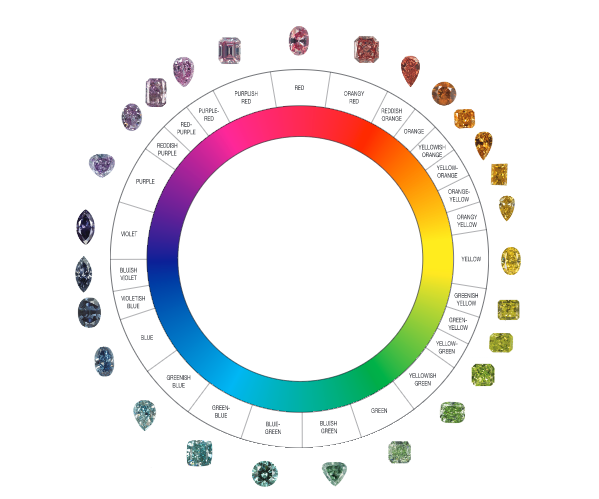
The IGI also uses stable light conditions and a set of master stones to grade natural colored diamonds. However, for obvious reasons (the cost and the difficulty to find some colors), these consist mainly of yellow and brown stones, which are less rare. But most of all, the laboratory relies on the competence and expertise of its graders and when a stone is difficult to grade, the most experienced graders consult with each others.
As for the HRD, the laboratory uses the Munsell system but won’t disclose more details about its methods.
"Grading a natural color diamond remains a real challenge because it is always subjective."
Although all laboratories do strive to be as scientifically objective as possible, all of them admit that grading colored diamonds sometimes implies compromises.
Firstly, the ability to perceive hue variations can differ from one person to another. Secondly, the observation of color in a transparent, faceted object is a challenge.
As a matter of fact laboratories like the IGI and the GIA have tried to use machines like spectrometers in order to grade the color of colored diamonds. Nevertheless, all have failed; first because diamonds are 3D objects, and then because the modifier depends on the external light. Moreover, transparency and refraction make the use of machines impossible.
Naming of a Color
All laboratories use the same 3 criteria to grade the color of natural colored diamonds. These are the hue, the tone, and the saturation.
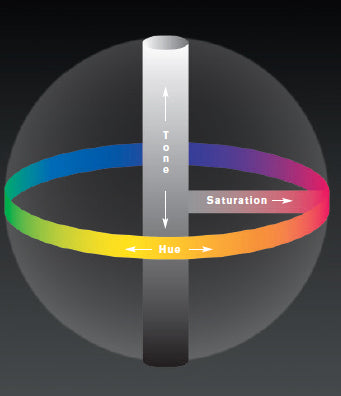
The primary aspect is the hue, i.e. the color of the stone. It can be a single color (“yellow”), or a combination of colors like “greenish yellow”. In this case, the color name indicates it is much more yellow than green. So if several terms are used, the last one is the predominant color. However, a color can be called “green-yellow”. Here the difference is that the color is almost as much green as yellow.
The second aspect is the tone/saturation, which is defined both as a function of the saturation of the color (how strong the color is) and as a function of whether the color is light or dark.
The Various Degrees of Intensity
The intensity is indicated by adding a prefix to the color:
Faint, Very light, Light, Fancy light, Fancy (no prefix), Fancy intense, Fancy vivid, Fancy deep or Fancy dark.
Faint and very light stones don’t get the “Fancy” prefix. As a general rule, a faint color can only be seen when the stone is compared to a colorless diamond.
A moderately saturated color will be called “Fancy” only.
Exceptional saturations are called “Intense”, and as for the term “Vivid”, it is extremely rarely given and denotes an outstanding stone.
“Deep” means that the color is strong and more saturated but “Dark” means that a stone’s shade is over saturated.
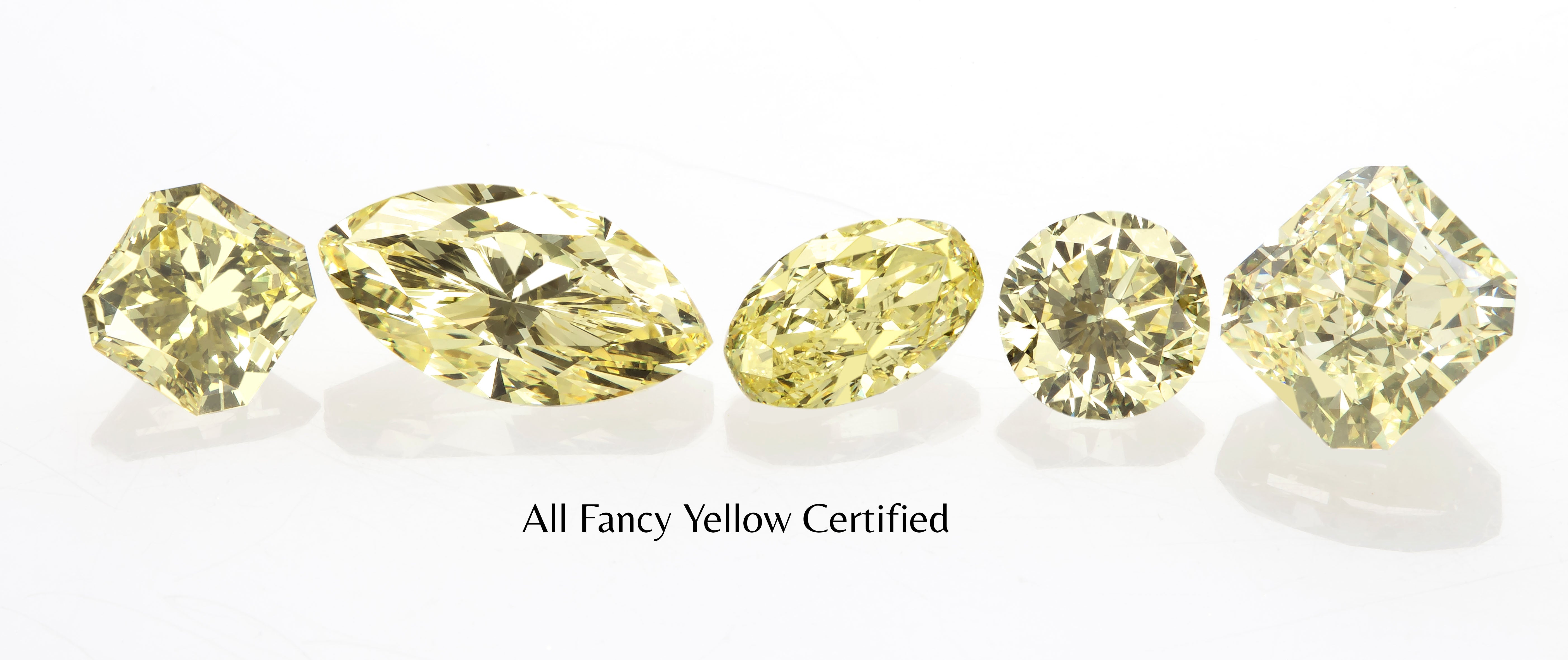
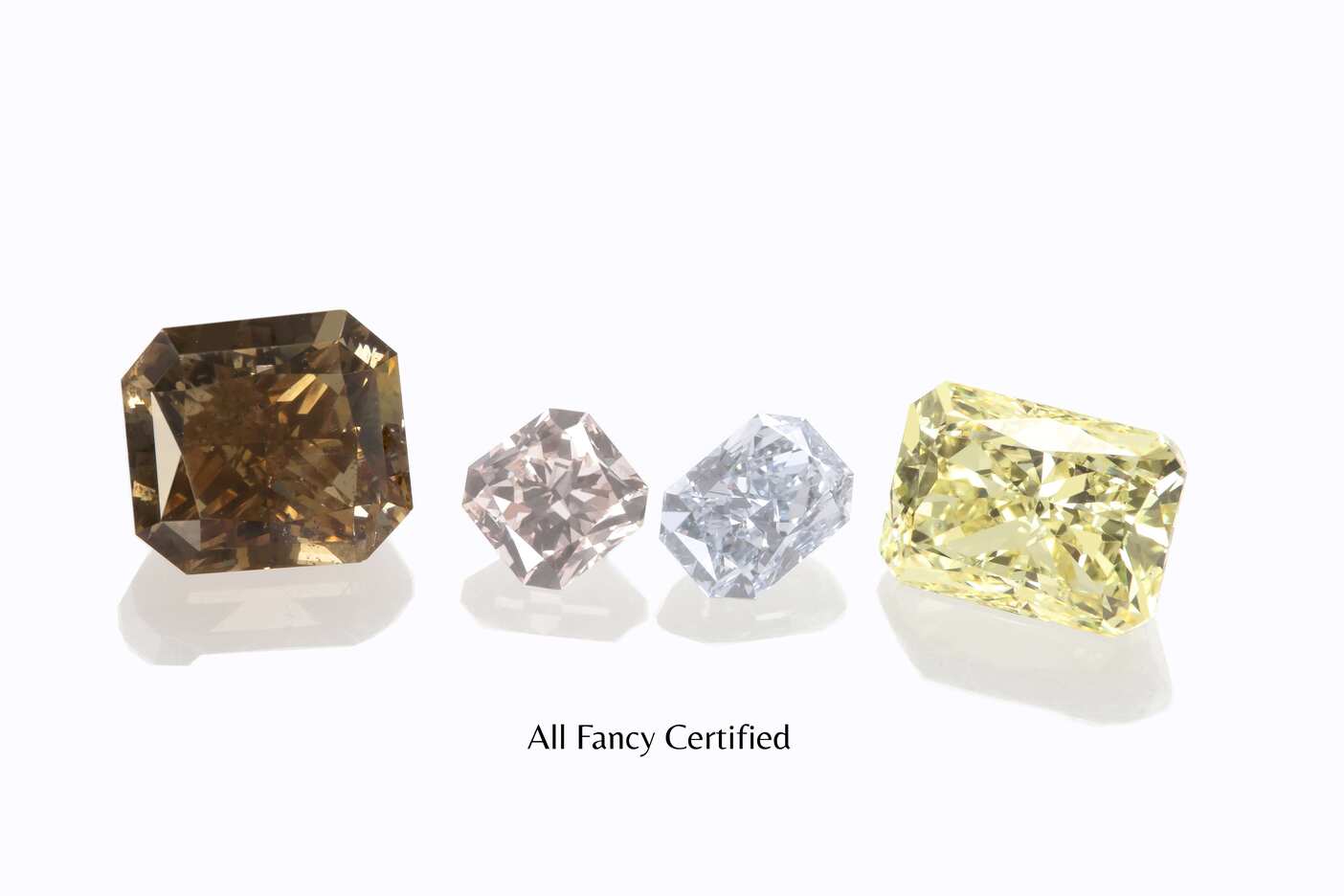
t is important to note that depending on the color, the term “Fancy” doesn’t determine the same level of saturation. Yellow being by far the least rare of all colors, a greater depth of this color is required for a stone to get a “Fancy” grade. In contrast, a “Fancy” grade is given to paler pink or blue stones because they are rarer.
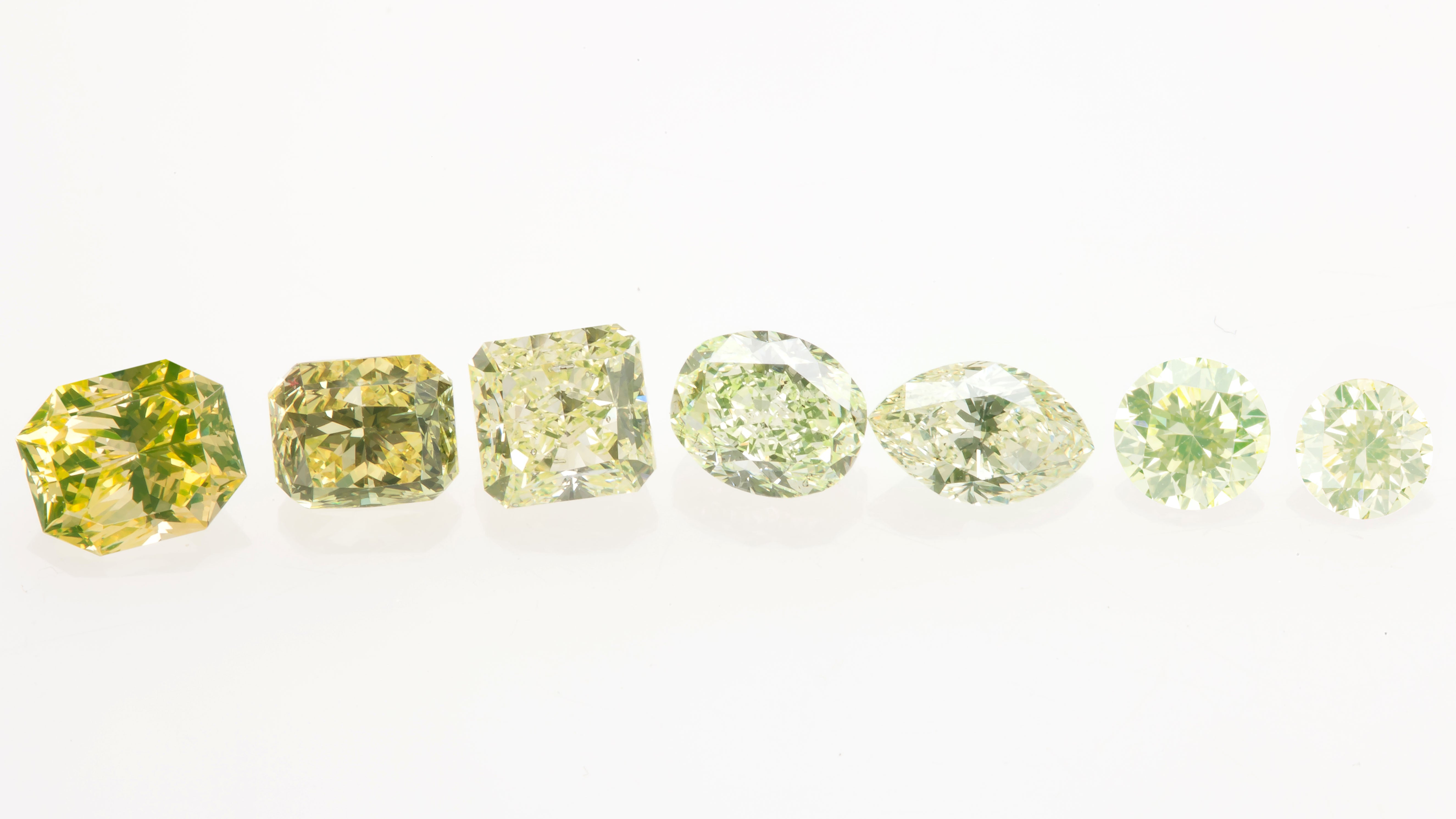
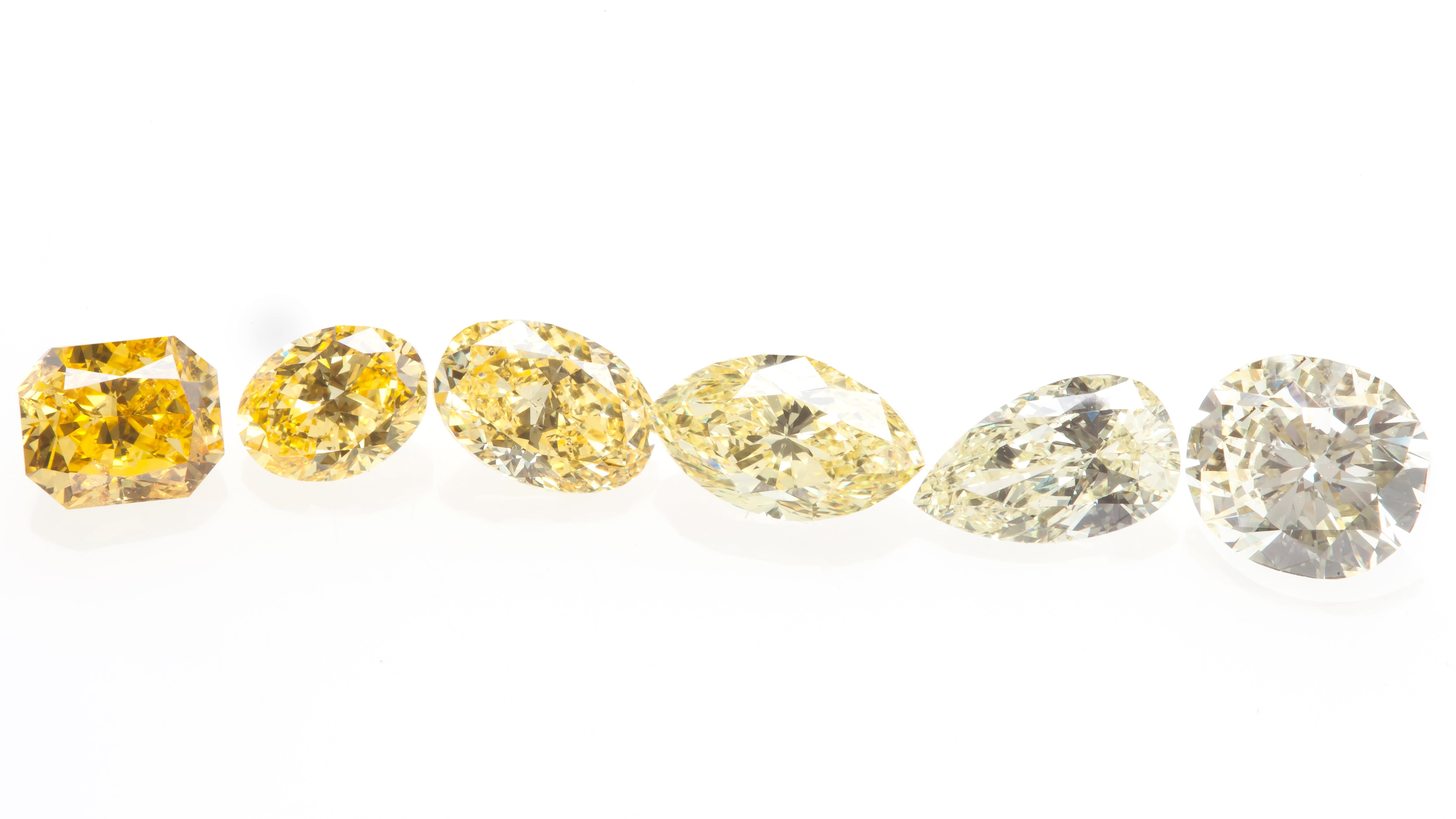
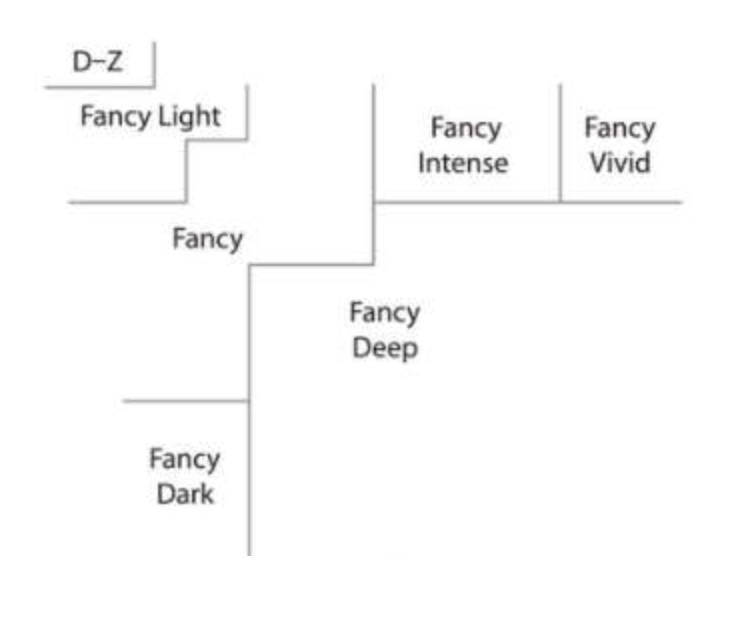
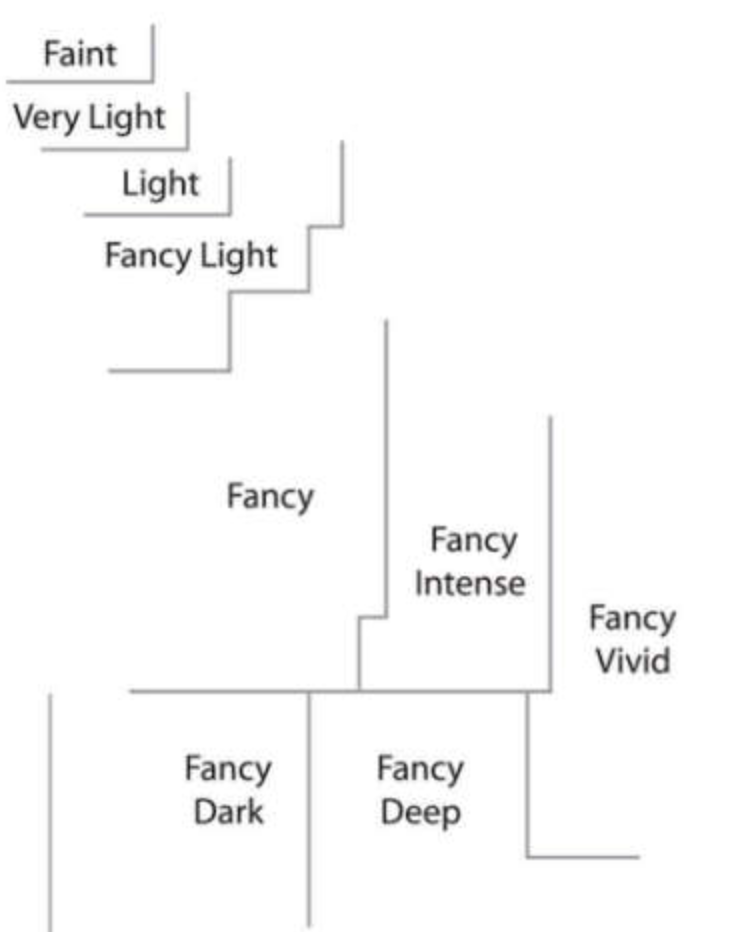
"Shown on tone/saturation charts are the Fancy-grade terms for blue and yellow diamonds.Note that the boundaries between terms are different for the two hues. A relatively rare color [hat typically occurs in lower saturations, such as blue, is assigned certain "Fancy" grades at lower saturation levels than a color such as yellow, which typically occurs in higher saturations. At lower levels, yellow diamonds are graded in the "D-to-Z" range. The shaded areas represent the approximate ranges in which these two colors have been seen to date in diamonds."
- Source: J.M. King, T.M. Moses, J.E. Shingley, Y.Liu (GIA):"Color grading of Colored Diamonds in the GIA GEM Trade Laboratory" in Gems & Gemmology (1994).
Here we can see that portions of color space are not all equal. The slight differences in the terminology boundaries depends on the rarity of the diamond’s color.
Additionally, there are gradation differences inside a same level of saturation. For example a fancy grade can share the same borderline with fancy light, intense, and even deep grades. Also, the portion of saturation isn’t the same for the various saturation levels and this is different for every color.
"As a result, one can find more colors nuances under the same name on a GIA certificate."
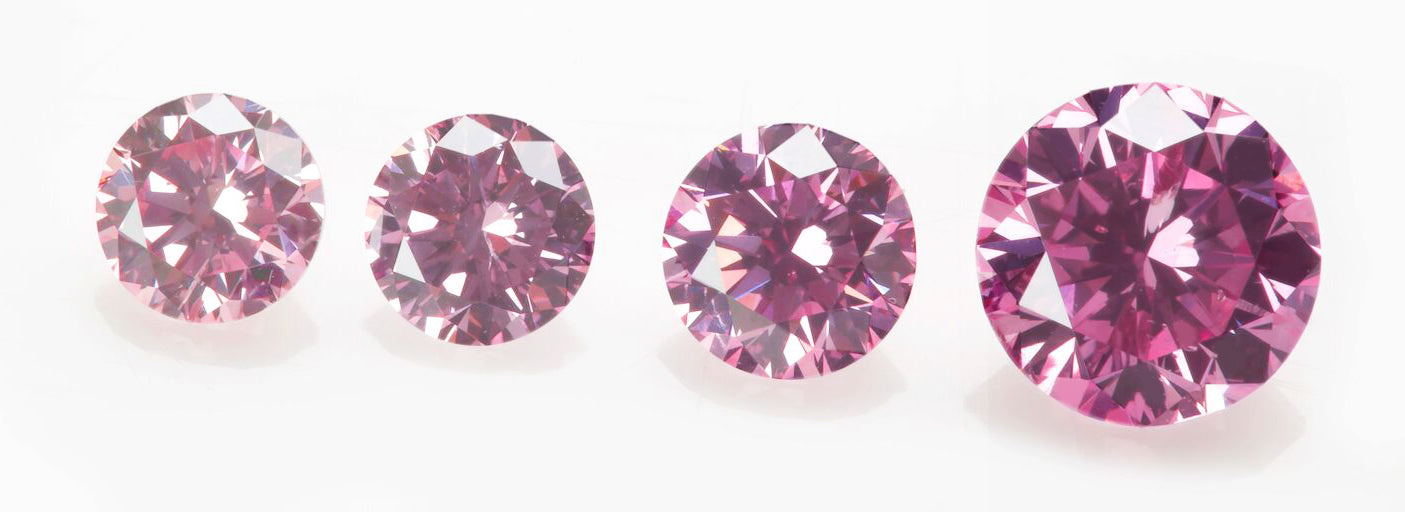
"Hue names can vary from one laboratory to the other."
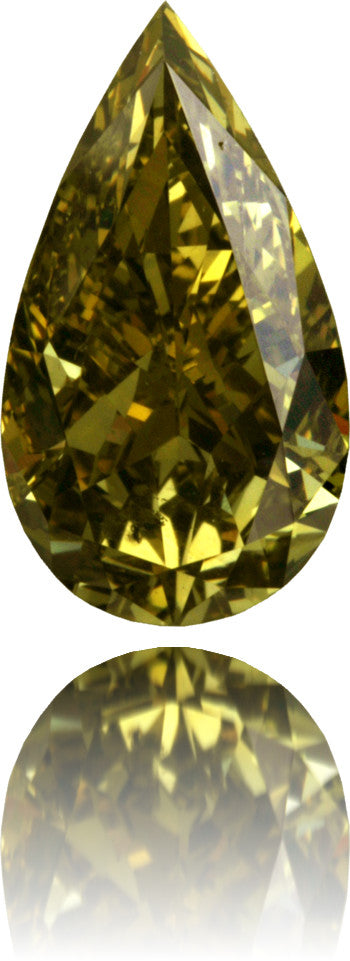
Contrary to the GIA, the IGI uses a broader terminology, with more color nuances than the GIA and the HRD, in an attempt to describe colors the most accurate and possible way, and closer to what they can be in nature.
Thus, one can find hue names such as olive, lime, or cognac on IGI certificates.
The Particular Case of Gray and Blue Diamonds at the GIA
"The GIA considers gray and brown colored diamonds differently from the other colors."
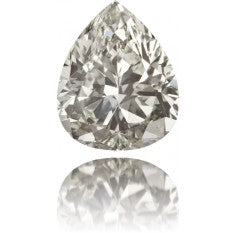
Indeed, the term “Fancy vivid” will never be given to a gray stone. Additionally, the intensity terms allowed will vary depending on whether the color is the main one or a modifier. Compared to other color diamonds, they are limited.
When brown or gray is the main color, the intensity terms that can be found are: Light, Fancy light, Fancy, Fancy deep, and Fancy dark.
As when brown or gray are modifiers (i.e. “brownish pink”), the terms found are: Fancy light, Fancy, Fancy deep, and Fancy dark. For instance, the famous Hope Diamond has been certified “Fancy dark grayish blue”.
As regards brown and gray colors, the GIA states that one cannot talk about “saturation”, but “tone”. Nevertheless, one can wonder why the term “Fancy deep” is sometimes used since “deep” indicates a saturation level and not a tone. This causes confusion amongst the diamond professionals, not to mention the end consumer.
